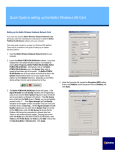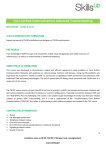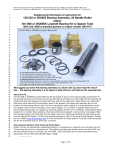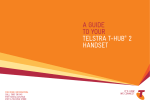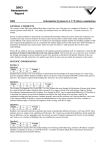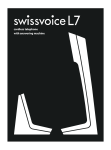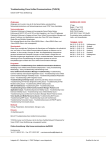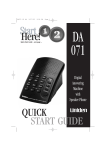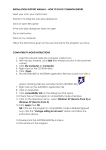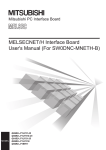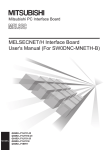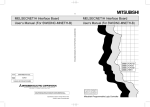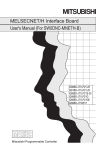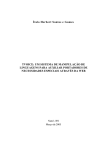Download TELSTRA T-VOICE® 502 HANDSET USER MANUAL
Transcript
TELSTRA T-VOICE 502 HANDSET USER MANUAL ® 1 GETTING TO KNOW YOUR HANDSET Handset keys Earpiece Display Volume keys LED indicator Navigation key Dialled calls Softkey (multifunctional key) Softkey (multifunctional key) Talk key / speaker phone Calls list Call Voicemail Switch ringer on/off, select upper or lower case Redial key “End Call” / Power key 1 2abc 3def 4ghi 5jkl 6mno 7pqrs 8tuv 9wxyz Space key * # Activating / deactivating the key lock Aa 0 Redial Internal Microphone 2 Internal call key Softkeys (multifunctional keys) Right softkey: Open menu, choose menu options, confirms entries/ settings. Left softkey: Open Contacts, returns to previous menu step, delete characters while entering text. Navigation key For scrolling up/down or right/left. Dialled calls Opens list of last dialled calls. Calls list Access to answered, missed, dialled calls. Talk key/Speakerphone For making and accepting calls and switching to hands- free. “End call”/Power Key Press briefly to end a call or return to standby mode. Press and hold down to switch the handset on/off. Volume key In call volume adjustment during calls, ringtone volume adjustment in idle. 1 0 4ghi 2abc 3def 9wxyz Alphanumerical keypad 5jkl 6mno 7pqrs 8tuv * Aa 0 Redial 9wxyz # 2abc 4ghi 5jkl Space key When entering name, insert space. While dialling, insert a dialling pause. Internal 1 2abc 1ghi 4 2jkl abc Voicemail 3mno def 5 6 4 5 7ghi pqrs 8jkl tuv 1 For dialling telephone numbers. 3def Press and hold down for direct access to Telstra’s voice message service. 6 9mno wxyz 7pqrs 8 9#wxyz 0tuv Asterisk Aa key def *3 *6 Aa Redial mno 0 For entering asterisks. In idle mode: Press and hold down to switch handset ringer on/off. # Internal When entering names, switch between upper and lower case lettering. 1 2abc Internal 3def 9wxyz 4ghi 5jkl 6mno # Hash key 7pqrs 8tuv 9wxyz Internal 3def # 0 Aa *6mno Redial 7pqrs 8tuv * Aa 0 Redial 1 2abc 4ghi 5jkl 7pqrs 8tuv * Aa Redial 0 Redial 9wxyz For entering the hash symbol. In idle mode: Press and hold down to switch keylock on/off. Internal Redial Call back the last dialled number. # Internal Internal call key For making calls between T-Voice 502 Handsets and smart devices with the T-Voice app installed. 3 Handset display symbols The following symbols are displayed on your handset. Coverage symbol Reception displayed when the handset is within range of the Gateway. Flashes yellow when out of range of the Gateway or not registered with the Gateway. Home number Alarm set Indicates that the alarm is set. Symbols presented in the Contact and Call List indicate the phone number type. Mobile number Office number Handsfree on Indicates that handsfree speaking is activated. Ringer off Indicates that the ringer is switched off. Keypad lock Indicates that the keypad is locked. Battery full Indicates that the batteries are fully charged. Battery empty Indicates that the batteries are almost discharged. Missed calls Displayed if you have missed calls in the calls list. You have messages. Displayed if you have new voice messages. * * You must have Telstra’s Messagebank or Telstra Home Messages 101 service activated to access your voice messages. LED indicator Your TELSTRA T-VOICE 502 handset has a LED indicator allowing you to know the status of your phone. Solid green - Batteries near to fully charged. Flashing green on dock - Batteries charging. Flashing blue - You are receiving an internal or external call. - You have one or more missed calls. - You have one or more voice messages. - You are receiving a software update. Solid red off dock - Low charge. Flashing red off dock - Very low charge, batteries need charging. To stop the LED flashing blue, open the Call Log and scroll through your missed calls and/or listen to your Voice messages. To stop the LED flashing red, place the handset into the charging cradle. 4 PRACTICAL ADVICE After successful registration of your handset, the following signposts may help you to find important functions quickly. Information about on page Link Handset to Telstra Gateway 12 Wiring your gateway 13 Add a new contact 24 Voicemail setup 28 Modify ringtones 30 Set alarm clock 31 Turn on keypad lock 22 Activate handsfree operation 20 Locate a mislaid handset 22 Redial last dialled numbers 22 Trouble-shooting 34 5 WHAT’S INSIDE 02 Getting to know your handset 17 Telstra Broadband (ADSL) with Existing Phone 02 Handset keys 18 Telstra Fixed Wireless Customers 04 Handset display symbols 18 Telstra Fixed Wireless Customers with Existing Phone 04 LED indicator 19 About the user guide / menus 05 Practical advice 19 User guide fonts and symbols 06 What’s inside 19 Main menu 08 Safety precautions 19 Menu navigation 08 If the device is passed to another user 20 Making and receiving calls 09 Environmental impact 20 Making a phone call 10 Preparing the handset 20 Accepting a call 10 Contents of the package 20 Handsfree operation 10 Power up the handset 21 Earpiece/handsfree volume 10 Inserting the rechargeable batteries 21 Mute 10 Removing the battery compartment cover 21 Dialled calls 10 Connecting the charger 22 Redial 11 Charging the batteries 22 Group call (paging) 11 Select your language 22 Keypad lock 11 Installation assistant 22 Internal calls 12 Link Handset to Telstra gateway 22 Call waiting 12 Handset Range 23 Starting a second call 13 Wiring your Telstra gateway 23 Toggle (switching between two calls) 13 Telstra Gateway Max Setup 23 Call transfer to another handset 13 Telstra NBN Customers 23 Three-way calling 13 Telstra Broadband NBN with Existing Phone 24 Contacts 14 Telstra Broadband (ADSL) Customers 26 Calls List 14 Telstra Broadband (ADSL) with Existing Phone 26 Missed, answered and dialled calls 15 Telstra Fixed Wireless Customers 26 Icons in the call list 15 Telstra Fixed Wireless Customers with Existing Phone 26 Dialling a number from the calls list 26 Deleting individual entries 16 T-Gateway Setup 26 Deleting an entire list 16 Telstra NBN Customers 26 Deleting all lists 16 Telstra Broadband NBN with Existing Phone 27 Saving numbers from the calls list to the contacts 17 Telstra Broadband (ADSL) Customers 6 28 Call Features 28 Voicemail (Network answer machine) 28 Call forwarding 28 Call waiting 29 Call return 30 Audio 30 Ringtones 30 Sounds 31 Clock 31 Appointments 31 Set alarm 31 Time/Date format 31 Time zone 32 Settings 32 Handset settings 32 Handset names 32 Language 32 Registration 33 Deregister a handset 33 Reset 33 Software version 34 Faults and trouble-shooting 35 Appendix 35 Care 35 Disposing of the rechargeable battery 35 Software update 35 Warranty Conditions 7 SAFETY PRECAUTIONS Your new Telstra T-VOICE 502 handset is intended for use within Australia for connection to the public telephone network and Telstra’s NBN or ADSL Service, paired with a compatible Telstra gateway (T-Gateway® or Telstra Gateway Max™). Please read the safety precautions and user guide carefully before installing the telephone. The user guide is a part of the product package and must be passed on to a new owner. ! Caution: Warning/danger statement, follow safety precautions! • The ambient temperature must be between 5 °C and 40 °C. • Please note that the ringer for incoming calls as well as signal tones are emitted on the handset loudspeaker. Do not therefore hold the handset close to your ear while one of these functions is on, otherwise your hearing may be affected. • Use only the following supplied power supply: - MN-A002-A145 ; 7.5 V, 300mA from MEIC • This product requires an electrical supply of 100-240 volts AC. • The mains power plug must always be easily accessible. • To disconnect the device from mains, separate the plug from the wall socket first. Rechargeable batteries Use the two supplied rechargeable batteries: - HFR-44AAAJ800 from HIGHPOWER Using other rechargeable batteries or non-rechargeable batteries/primary cells can be dangerous and cause malfunctions in or damage to the telephone. Product dimensions and weight 168 x 51 x 21.5 mm / 140g Please note: • Do not immerse batteries in water or throw in the fire. • Rechargeable batteries can become warm while recharging. This is normal and not dangerous. • Do not use any other type of charger since this may damage the batteries. • Before using the telephone, wearers of hearing aids should note that radio signals can be picked up by the hearing aid and cause an unpleasant buzzing noise. • Do not use your cordless telephone in environments at risk from explosion (e.g. paintworks, petrol stations etc.) • Do not position the telephone in bathrooms or showers. • The radio signals may influence the working of medical equipment. • In the event of a power cut or if the batteries are discharged, your cordless telephone will not function! • The handset must not be charged up without batteries or the battery cover in place. • Do not touch open contacts. 8 Small Metal Objects Small metal objects may stick to the handset due to the presence of magnetic fields on the handset. Exercise caution when used where metal objects can be picked up. Environmental impact At the end of the product’s life cycle, the telephone must not be disposed of in normal domestic waste. Please take it to a collection point for processing electrical and electronic equipment. Some materials used in this product can be recycled if you take it to a recycling depot. By recycling parts or raw materials from used products you will be making an important contribution to environmental protection. Please contact your local authority if you require information about collection points in your neighbourhood. 9 PREPARING THE HANDSET Contents of the package T-Voice 502 handset Power Charging cradle Telephone cord 2xAAA batteries Quick start guide Power up the handset Inserting the rechargeable batteries The bottom part of the handset contains a battery compartment for housing two type AAA batteries. Removing the battery compartment cover Slide the battery compartment cover downwards and lift it up. Insert the batteries in the battery compartment. Make sure the polarity is correct. Insert the batteries so that the flat end (negative polarity) of the battery is pressing against the spring. The handset will not function if the batteries are incorrectly inserted, and this may result in damage. Connecting the charger Insert the AC adaptor plug into the socket on the charging unit. Then connect the AC adaptor to the power outlet. • Your handset will not function if the power supply is not correctly connected, or during a power failure (no emergency mode). • The telephone cord must pass under the charging cradle to assure its proper standing. • P osition the charging cradle in a clean, dry and well-aired location. The ambient temperature must be between 5 °C and 40 °C. ! Safety note Use only the following supplied power supply: - MN-A002-A145 ; 7.5 V, 300mA from MEIC 10 Charging the batteries The batteries will take approximately 14 hours to fully charge, before the handset is ready for first use. • For proper operation of the handset the batteries must be fully charged initially. • Do not insert the handset in the charger without batteries. • Do not use any other type of charger since this may damage the batteries. The following symbols indicate the charging status on the handset display: “high” “medium” “low” “requires charging” Please note: after you have inserted the batteries for the first time, the battery display will indicate the correct information on the charging status only after a complete charging cycle. Use only approved rechargeable batteries NiMH AAA. Never use disposable batteries/primary cells. Approved models: - HFR-44AAAJ800 from HIGHPOWER • You can replace the handset in the charger after every call. Charging is electronically controlled to ensure optimal charging of batteries in different charge states. Avoid removing the batteries from the handset for no good reason, since this affects the optimum charging cycle. • You can use the telephone for up to 10 hours with fully charged batteries. The handset has a standby time of up to 150 hours. • If the battery charge status has reached its lower limit, the battery symbol ( and a warning signal is heard. You have only a few minutes of talk time left. Select your language When the batteries have been inserted for the first time the language choice appears. Deutsch Français Italiano English 1. Use the arrow keys to select your language. 2. Select OK to confirm. Back 11 OK ) flashes in the display Link Handset to Telstra Gateway Link your handset 1. On first use your T-Voice handset will prompt you to put the handset in registration mode. Press OK. 2. Long press the DECT button on your compatible Telstra gateway (T-Gateway/Telstra Gateway Max) for 5 seconds and release. The DECT light on the gateway will start flashing. Telstra T-Gateway Telstra Gateway Max DECT The DECT button is located on either the back or side of your gateway. DECTDECT button DECTDECT button 3. If the handset keeps searching, repeat step 2. 4. W hen your handset is linked, you will now see the main handset screen. To start making and receiving calls on your handset, ensure your gateway is wired correctly. Refer to “Wiring your Telstra gateway” located on page 14 of this user manual. 12:01PM 10 Mar Phone 1 Contacts Menu Your handset will look similar to the diagram above when it is ready. Handset Range The maximum range between the Telstra gateway and the Telstra T-Voice 502 handset is up-to 50 metres indoors and 300 metres outdoors. Depending on the surrounding conditions as well as structural factors, the range may be smaller. If the range is exceeded, the call will be disconnected unless you move back into range within a few seconds. • Do not expose the handset/charger to direct sunlight. • Protect the handset/charger against moisture. Do not position the handset/charger in rooms exposed to condensation, corrosive steam or excessive dust. Condensation can be present in basements, garages, or sheds. Position the handset/charger in a clean, dry and well-aired location. Choose a place which is stable, level, and not subject to vibrations. To avoid mutual interference, do not position the handset/charger in the immediate vicinity of electronic equipment such as hi-fi systems, office equipment or microwave ovens. Avoid positioning the telephone near heat sources such as heating elements or near obstacles such as metal doors, thick walls, and cupboards. 12 WIRING YOUR TELSTRA GATEWAY If you have back to base alarms or are a Priority Alert customer it is recommended that you contact Telstra on 132200 to arrange for a Telstra Technician to set up your phone service. Additional technician callout charges may apply. Prior to using the T-Voice 502 handset you need to ensure that your compatible Telstra gateway is set up to make and receive phone calls. Telstra Gateway Max Setup A) Telstra NBN Customers • If you have had a Telstra Broadband (NBN) service installed at your premise you will not be required to perform any additional wiring on the Telstra Gateway Max. Once you have linked your T-Voice 502 to the gateway you will be able to make and receive calls. • If you have had a Telstra Broadband (NBN) service installed that did not require any NBN equipment to be installed at your premise, follow the same instructions as the Telstra Broadband (ADSL) service B) Telstra Broadband NBN with Existing Phone • If you have an existing phone you would like to continue to use, insert the phone cable of the existing phone into the green phone socket on the back of the Telstra gateway, as shown below. 13 C) Telstra Broadband (ADSL) Customers 1. C onnect a phone cable between the Local Phone socket on the ADSL Filter and the black PSTN socket on the gateway. 2. Connect a phone cable between the ADSL modem socket on the ADSL Filter and the grey DSL socket on the gateway. 3. Connect a phone cable between the wall socket on the ADSL Filter and the wall outlet, as shown below. D) Telstra Broadband (ADSL) with Existing Phone If you would like to continue to use an existing phone in your home, insert the phone cable of the existing phone into one of the green Phone sockets on the back of the Telstra gateway, as shown below. 14 E) Telstra Fixed Wireless Customers Telstra Fixed Wireless is a service where the broadband is provided wirelessly using the NBN network and the voice service is provided over a normal telephone line. If you have a Telstra Fixed Wireless Broadband service that includes a Telstra Fixed Home phone service, ensure that there is a phone cable connected to the black PSTN socket on the gateway and the wall socket as shown below. F) Telstra Fixed Wireless Customers with Existing Phone Connect the existing phone to one of the green Phone sockets, as shown below. 15 T-Gateway Setup A) Telstra NBN Customers • If you have had a Telstra Broadband (NBN) service installed at your premise you will not be required to perform any additional wiring on the T-Gateway. Once you have linked your T-Voice 502 to the gateway you will be able to make and receive calls. • If you have had a Telstra Broadband (NBN) service installed that did not require any NBN equipment to be installed at your premise, follow the same instructions as the Telstra Broadband (ADSL) service B) Telstra Broadband NBN with Existing Phone • If you have an existing phone you would like to continue to use, insert the phone cable of the existing phone into the green Phone socket on the back of the Telstra gateway, as shown below. 16 C) Telstra Broadband (ADSL) Customers 1. C onnect a phone cable between the Local Phone socket on the ADSL Filter and the black PSTN socket on the gateway. 2. Connect a phone cable between the ADSL modem socket on the ADSL Filter and the grey DSL socket on the gateway. 3. Connect a phone cable between the wall socket on the ADSL Filter and the wall outlet, as shown below D) Telstra Broadband (ADSL) with Existing Phone If you would like to continue to use an existing phone in your home you will need a phone double adaptor as shown below. The double adaptor can be purchased from any leading electronics store. 17 E) Telstra Fixed Wireless Customers Telstra Fixed Wireless is a service where the broadband is provided wirelessly using the NBN network and the voice service is provided over a normal telephone line. If you have a Telstra Fixed Wireless Broadband service that includes a Telstra Fixed Home phone service, ensure that there is a phone cable connected to the black PSTN socket on the gateway and the wall socket as shown below. F) Telstra Fixed Wireless Customers with Existing Phone If you would like to continue to use an existing phone in your home you will need a phone double adaptor as shown below. The double adaptor can be purchased from any leading electronics store. 18 ABOUT THE USER GUIDE/MENUS User guide fonts and symbols # Redial Uppercase bold characters indicate softkey functions. These pictograms indicate the keys to be pressed. Uppercase bold italic characters indicate texts appearing on your handset display. Main menu The available menu icons appear on the display: Contacts Calls list Call Features Audio Clock Settings Press to select the desired icon. The title of the selected menu appears at the top of the display (e.g. Audio). Menu navigation Your handset provides you with an easy-to-follow menu. To select main menu, sub-menu and options, press the softkey below the corresponding display text. under MENU to open the With the handset switched on and ready for use, press the softkey menu selection and use the navigation key to scroll to the menu you are seeking. 1 2abc 3def Press the softkey under OK to open the options list, use the navigation key 4 5 6 list to the preferred option, and confirm the option by pressing OK. ghi jkl 7pqrs 8tuv Back to previous menu * Press BACK to return to the previous menu. Aa Redial 0 mno to scroll down the 9wxyz # Internal End menu To exit a menu, press the left softkey under BACK. If you want to return to the main menu screen, . press 19 MAKING AND RECEIVING CALLS Making a phone call First, enter the number. Press to dial the number. If you enter an incorrect number, you can: • delete it by pressing repeatedly the softkey under CLEAR: short press to delete characters / long press to delete the entire number. • move the cursor to the desired character by pressing the navigation key (left/right). Ending a call Press or replace the handset in the charger. Accepting a call The caller’s number will be displayed if you have Calling Number Display (CND) activated. The name is displayed if saved in the Contacts. Press to accept the call. To check the status of your CND, or to activate this service, order online at www.telstra.com or call 132200. Handsfree operation You can use the handsfree function to conduct calls without holding the handset in your hand and allow others present in the room to take part in the call. Activating handsfree before a call: 1. Enter the desired phone number. 2. Press 3. Press twice. The display shows and you can hear the ringing signal over the handset loudspeaker. to deactivate handsfree speaking. Switching to handsfree speaking during a call: 1. Press . 2. To deactivate handsfree speaking press one more time. • Do not hold the handset close to your ear during handsfree operation, the loudspeaker volume can be very high. • If you have activated handsfree operation during a call, you can replace the handset in the charger without ending the call. 20 Earpiece/handsfree volume You can adjust the earpiece and handsfree loudspeaker volume by pressing a call. The selected setting is saved after the end of the call. or the side volume key during The earpiece and handsfree loudspeaker volumes are independent but the setting procedure is identical. Mute During a call you can mute the microphone. 1. Press the softkey under MUTE during a call to mute the handset microphone. 2. Press the softkey under UNMUTE to reactivate the microphone. Dialled calls Last dialled calls are saved in a Dialled calls list. If a name and number are already stored in the Contacts, the name is shown instead of the number. Redialling a number from the list If the telephone is in standby mode: 1. Open the DIALLED CALLS list, by: Pressing the softkey under MENU, scroll to CALLS LIST using CALLS and confirm with OK or by pressing . 2. Press and confirm with OK. Select DIALLED to scroll through the list. 3. Press to dial the number. Press the softkey under OPTIONS. You have the following options: • CALL: call the selected entry in the Dialled calls list • DETAILS: show details of the selected entry in the Dialled calls list • DELETE CALL: delete the selected entry in the Dialled calls list • SAVE NUMBER: save number in the Contacts • DELETE ALL CALLS: delete the entire Dialled calls list on the gateway. 21 Redial 1 2abc 3def 4ghi 5jkl 6mno 7pqrs 8tuv 9wxyz * You can call the last dialled number by simply pressing the Redial button Dialled calls list will be established. Aa Redial 0 # . A call to the last entry in the Internal Group call (paging) You can activate a group call to locate a mislaid handset. 1. Press the DECT key on the gateway. All the handsets registered to the gateway will ring. 2. Press the DECT key again to end the ringing signal or press Keypad lock 1 2abc on one of the handsets. 3def If you want to carry the handset around in your pocket, you can activate the key lock. This prevents you 4 5 6 1 2 3 inadvertently dialling a number. 7 8 9 ghi jkl mno pqrs tuv wxyz abc 0 1. Press and hold *down Aa Redial # 4ghi . The display shows KEYPAD LOCKED. 7 pqrs def 5jkl 6mno 8tuv 9wxyz Internal 2. To unlock the keypad, press the softkey under UNLOCK, then *press Aa Redial # 0 . Internal If the keypad is locked, • you can dial emergency numbers and incoming calls can still be accepted. • you cannot dial a number or access menus. 2abc 3def 1 2abc 3def 4ghi 1 5jkl 6mno 4ghi 5jkl 6mno 7pqrs 8tuv 9wxyz Internal calls You can call other handsets which are registered with the gateway. This allows you to make internal calls. # 0 7 8 9 pqrs tuv wxyz * Aa # , select the desired handset, from the list and confirm with OK. Pressing the Press *the0internal key internal key automatically dials the second handset if only two handsets are registered with the gateway. Press to end the call. Redial Aa Redial Internal Internal Internal calls to T-Voice enabled devices To initiate an internal call to a T-Voice enabled device, press CONTACTS, select the T-Voice enabled device from the list, and press the green call key Refer below for internal call shortcuts: • • • • • Dial **0 to ring all devices connected to the gateway dial 1** to 7** to individually call an individual smart phones/tablets with T-Voice installed. dial **1 to **6 to call an individual T-Voice 502 handset dial **7 to call the phone wired to the gateway through the green phone socket d ial **8 to call the other phone wired to the Gateway through the green phone socket (Telstra Gateway Max only) Call waiting With this service you can have a telephone conversation and still be informed that someone else is calling you. If a second call (internal or external) comes in you will hear the “Call waiting” tone and you can answer the call (press key ) or reject the call (press the softkey under REJECT). Press the softkey under OPTIONS. You have then the following options: • Accept/End: Accept the waiting call, end the active call. • Accept/Hold: Accept waiting call, active call is put on hold. If you have two active calls: • Press the left softkey under TOGGLE to switch between callers. To be able to answer a call waiting, you must have Caller Number Display (CND) activated. To check the status of your CND, or to activate this service, order online at www.telstra.com or call 132200. 22 Press OPTIONS again, you have the following options: • Mute: to mute the handset microphone. • Conference: to connect all callers with each other. • End active call: end active call, continue the call on hold. • Call transfer: end call and connect the other two call parties Starting a second call Second internal call To make an internal call without ending an existing external call: , select the desired handset from the list with OK. Pressing the internal key 1. P ress the internal key automatically dials the second handset. Internal Internal 2. The external call is put on hold, the called handset rings. If the second handset answers, you can talk to the internal call partner without the external caller hearing you. Second external call To make a second external call when on an existing external call: 1. Press the softkey under OPTIONS, START NEW CALL, confirm with OK. 2. Enter the external call number and press key . Toggle (switching between two calls) You have two active calls, one of which is on hold. 1. Press the left softkey under TOGGLE to switch between callers. 2. Press the softkey under OPTIONS, END ACTIVE CALL to end one of the calls and continue the one on hold. Call transfer to another handset You can transfer the current call you are on to another handset. 1. Press the internal key Internal and select the handset from the available list. 2. Once the second handset answers, you can transfer the call by pressing the red End Call key on your handset. I f the second handset does not answer, you can end the ringing and return to the original call by pressing the softkey under END. Three-way calling You can set up a three-way conference with 2 parties (external or internal). 1. P ress the softkey under OPTIONS, CONFERENCE to connect all callers with each other. Each caller can leave the conference call by ending the call on their handset. 2. Press the softkey under OPTIONS, END CONFERENCE to end the conference. Up to 5 callers can be included in the conference for Telstra NBN customers. 23 CONTACTS Up to 1000 contacts can be stored on the gateway and accessed by every T-Voice 502 handset and smart device with T-Voice app installed. Every entry contains a first and last name and up to 3 telephone numbers (e.g. home number, mobile, office). First and last names can be up to 16 characters long and numbers up to 25 digits long. Adding a new contact On the home screen of the handset: 1. Press the softkey under CONTACTS. The contacts are displayed in alphabetical order. 2. Press the softkey under OPTIONS. Select NEW CONTACT and enter the first and last name and the numbers (max. 3). If there are no Contacts, a message to this effect is displayed, an alert signal is heard and NEW CONTACT appears. Only a maximum of 16 characters for any shared contact will be displayed. 1 2abc 3def 1 2abc 3def 4ghi 5jkl 6mno 4ghi 5jkl 6mno Tips for entering names/numbers 7 8 9 7 8 9 pqrs * • Press Aa Redial tuv 0 wxyz pqrs # enter a space, * to Aa Internal Redial tuv 0 wxyz # or 1 2 enter 3 to a symbol Internal 4ghi 15jkl abc def 26abc mno 3def • The available special characters appear in59the6 lower display line. Press the relevant key repeatedly to scroll 48 7 through the characters. 70 8# 9 pqrs * Aa ghi tuv jkl wxyz mno pqrs tuv wxyz • When entering names, you can press * Redial Editing contacts Aa # 0 switch to between upper and lower case lettering. Internal Redial Internal 1. Press the softkey under CONTACTS. Scroll to the desired contact and press the softkey under OPTIONS. 2. Select EDIT <YOUR CONTACT NAME >, edit and save the contact. Show details 1. Press the softkey under CONTACTS. Scroll to the desired contact and press the softkey under OPTIONS. 2. Select SHOW DETAILS to display detailed information about the contact. Deleting one contact/all contacts 1. Press the softkey under CONTACTS. Press the softkey under OPTIONS. 2. Select DELETE <YOUR CONTACT NAME > or DELETE ALL CONTACTS, confirm with Yes. Contacts deleted will no longer be accessible from any handset or smart device using the T-Voice app registered to the gateway. Order contacts You can set your TELSTRA T-VOICE 502 handset to show your Contacts ordered alphabetically by first name or by last name. 1. Press the softkey under CONTACTS. Press the softkey under OPTIONS. 2. Select ORDER CONTACTS, confirm with OK. 3. Choose if you prefer FIRST NAME name or LAST NAME ordering for contacts, confirm with OK. Search You can search your Contacts by first name or by last name. 1. Press the softkey under CONTACTS. Press the softkey under OPTIONS. 2. Select SEARCH, confirm with OK. 3. C hoose if you like to search by FIRST NAME or LAST NAME and enter first letters of the name to be searched, confirm with OK. 24 Dialling numbers from the contacts 1.Press the softkey under CONTACTS. All contacts are displayed in alphabetical order. 2.Scroll to the desired contact and press . If you have stored more than one number for a contact (e.g. mobile and office), both numbers are displayed. Select the number you want to call (e.g. mobile) and press to call the number. You can also search alphabetically: enter the first letter of the name, select the desired contact and . The number is displayed and dialled. press 25 CALLS LIST Missed, answered and dialled calls Missed, answered and dialled calls are saved in the calls list in the gateway. If you have received new missed calls, a message to this effect appears in the display. If the list is full, the oldest entry is overwritten by the most recent entry. Icons in the call list Missed calls Answered calls Dialled calls Dialling a number from the calls list 1. T o dial a number from the list of missed calls, from the home screen, press the button on the select missed calls. Scroll down to the number you wish to dial and press the . and 2. To dial an answered or dialled call, from the home screen select the softkey under the Menu and scroll to , select ANSWERED CALLS OR DIALLED CALLS and the CALL LIST icon and select OK. Then using the press OK to confirm. Scroll through the relevant calls list using until you reach the entry you are seeking. Press to dial the selected number. • The list of dialled calls (Dialled calls list) can also be opened directly by pressing . • If a caller has withheld his number, PRIVATE appears instead of the caller’s number. Deleting individual entries 1. Press the softkey under MENU, scroll to CALLS LIST using and confirm with OK or use . 2. Select MISSED CALLS, ANSWERED CALLS or DIALLED CALLS, press OK to confirm. Scroll through the until you reach the entry you are seeking. relevant calls list using 3. Press the softkey under OPTIONS, DELETE CALL to delete the entry. Deleting an entire list 1. Press the softkey under MENU, scroll to CALLS LIST using or use and confirm with OK . 2. Select MISSED CALLS, ANSWERED CALLS or DIALLED CALLS, press OK to confirm. 3. Press the softkey under OPTIONS, DELETE ALL CALLS to delete the entire list. Deleting all lists 1. Press the softkey under MENU, scroll to CALLS LIST using or use . 2. Select DELETE ALL, press OK to confirm. 26 and confirm with OK Saving numbers from the calls list to the contacts 1. Press the softkey under MENU, scroll to CALLS LIST using or use and confirm with OK . 2. Select MISSED CALLS, ANSWERED CALLS or DIALLED CALLS, press OK to confirm. Scroll through the relevant calls list using until you reach the entry you are seeking. 3. Press the softkey under OPTIONS, SAVE NUMBER to create a new contact. 4. Enter the associated name and save the contact. This contact will now be shared across all T-Voice 502 handsets and smartphones/tablets with T-Voice installed and registered to the Telstra gateway 27 CALL FEATURES Voicemail MessageBank® and Telstra Home Messages 101 are voicemail services offered by Telstra that provide a personal answering service if your phone line is busy or you can’t get to the phone. You don’t need extra equipment like an answering machine, and you also get greater flexibility on Call Waiting – if you don’t want to interrupt your call, let MessageBank® and Telstra Home Messages 101 take your message. Using Voicemail with the TELSTRA T-VOICE 502 handset : is displayed to alert you to new messages. To call your Voicemail service and listen to your messages, press and hold down the 1 key for a few seconds. Call forwarding Call forwarding allows callers to reach you even if you are not near your own handset. • Unconditional: Incoming calls are forwarded immediately. • No reply: Incoming calls are forwarded after a delay. • Busy: Calls are forwarded if the line is busy. 1. Press the softkey under MENU. Scroll to CALL FEATURES using and confirm with OK. 2. Select CALL FORWARDING and confirm with OK. 3. Select the desired type of call forwarding UNCONDITIONAL, NO REPLY or BUSY, and confirm with OK. 4. Select now SWITCH ON or SWITCH OFF to turn on or off call forwarding, and confirm with OK. 5. If you are switching call forwarding on, enter the forwarding number (i.e. the number to which calls are to be forwarded) and confirm with SAVE. Instead of entering the number manually you can search and copy it from the Contacts. . 6. A call is made and call forwarding status is confirmed, end the call with Call waiting Call waiting tells you if there’s another call when you’re already on the phone. The call waiting tone alerts you to the new call – so you can answer it by putting your first caller on hold. To turn call waiting on or off: 1. Press the softkey under MENU. Scroll to CALL FEATURES using and confirm with OK. 2. Select CALL WAITING and confirm with OK. 3. Select now SWITCH ON or SWITCH OFF to turn on or off call waiting, and confirm with OK. 4. A call is made and call waiting status is confirmed, end the call with 28 . Call return If you miss a call and want to know who it was, Call return will let you find out the number quickly and easily (unless it was a blocked number). To retrieve the number of your last unanswered call: 1. Press the softkey under MENU. Scroll to CALL FEATURES using and confirm with OK. 2. Select CALL RETURN and confirm with OK. 3. A call is made to confirm the phone number of your last missed call. To call the number back press otherwise end the call with . Call charges and/or monthly charges may apply when using call management features, depending on your plan. 29 1 , AUDIO 1. Press the softkey under MENU. Scroll to AUDIO using and confirm with OK. 2. You have then the following options: Ringtones You can select from 15 ringtones for incoming external/internal calls. Set the ringtone melodies and associated volume for external/internal calls (when you select RINGER OFF, the ringer is switched off). You can also set an ascending volume. Sounds Your telephone supports various sounds which you can activate or deactivate: •Keypad Every time a key is pressed, a brief beep is heard. • Out of range A warning beep is sounded if you exceed the maximum range. Move closer to the Gateway. •Charging When you insert your handset in the charger, the batteries are automatically charged up. A short beep is heard. • Battery low Sounds when the batteries are running low. •Confirmation Settings and entries are confirmed by a short beep. 30 CLOCK 1. Press the softkey under MENU. Scroll to CLOCK using and confirm with OK. 2. You have then the following options: Appointments Your handset also acts as an appointments reminder: You can set 5 different appointment reminders. Enter an appointment title, date and time and the desired melody (choose from 15 ringtones). The selected melody is heard on the handset at the defined time. As soon as the time of the appointment arrives, it is displayed and the phone rings. By pressing the softkey under SILENCE (or after the ringing), the appointment will further be displayed. If you do not need the reminder in the display any longer, press CLEAR. Pressing the softkey under OPTIONS you can edit or delete appointments. Set alarm You can use your handset as an alarm clock. Select the desired interval (e.g. MON - FRI or ON DAILY) and alarm melody (choose from 15 ringtones). The alarm only sounds on the handset on which it has been set. Time/Date format Set the desired time format (12/24 hours) and date format (DD.MM.YY or MM.DD.YY). • If the “Time from network” option is set to “Off”, you can also set time and date manually for all handsets. • If you adjust time and date on one handset, time and date will be automatically adjusted on all registered handsets. Time zone If the default time zone is selected, time and date are provided and synchronised with the telephone network. You can set the desired time and date format. 31 SETTINGS 1. Press the softkey under MENU. Scroll to SETTINGS using and confirm with OK. 2. You have then the following options: Handset settings • Contrast - Select the desired contrast level. • Screen timeout - By selecting On, the handset screen will turn off after 1 minute of idle time. • Wallpaper - Select your desired wallpaper. You can see the available wallpapers by pressing the softkey under PREVIEW. • Auto talk - If you activate this function, you can accept a call simply by lifting the handset from the charger without pressing any key. • Keypad backlight - Turn the function on or off. • Led indicator - Turn the function on or off. Handset names All registered handsets are displayed (Phone 1, Phone 2 ..). To better distinguish between handsets, you can change the handset names. Language Set the preferred display language. Display texts will appear in the selected language. Registration You can register additional handsets with the Telstra gateway. The Telstra gateway must be within range. If you purchase additional handsets • you must have a compatible Telstra gateway available for this handset. • the handsets must be registered with the gateway before use! 1. Press the softkey under MENU. Scroll to SETTINGS using 2. Scroll to REGISTRATION using and press OK to confirm. and press OK to confirm. 3. Select REGISTER HANDSET and press OK to confirm. 4. PRESS AND HOLD THE DECT BUTTON ON THE GATEWAY FOR 5 SECONDS appears. Press and hold down the DECT button on the Gateway for five seconds. The DECT button is located on either the back or side of your gateway. 5. Release the DECT button. If the registration is successful the handset is assigned the desired handset name (e.g. PHONE 1). If the registration is not successful, repeat the procedure. 32 Deregister a handset To deregister a handset 1. Press the softkey under MENU. Scroll to SETTINGS using the 2. Scroll to REGISTRATION using and press OK to confirm. and press OK to confirm. 3. Select DEREGISTER HANDSET and press OK to confirm 4. S croll through the list of handsets using the YES to confirm. and press OK followed by Reset Reset the handset to default status. A handset reset deletes all handset settings. The handset remains registered to the Gateway after the reset. If the device is passed to another user, please deregister and then reset the handset Software version You can view the actual software version of your handset or gateway. 33 FAULTS AND TROUBLE-SHOOTING Not every issue results from a problem with the handset. Sometimes you only need to unplug the power supply and plug it in again or remove and re-insert the batteries in the handset and check that all cables are connected properly (gateway, handset and charger). The following guidelines will help you solve some problems. Symptom Solution Nothing is displayed on the screen. •T he display went into power save mode after a period of inactivity. Press any key to activate the display. • Batteries are empty. Recharge or change batteries. Handset does not react to any key being pressed •K eypad lock is activated, turn it off. Keypad lock may be turned on. To unlock the handset select the soft key under the Unlock menu item and then press the # key. Handset registration was not successful • Ensure that you are registering to a Telstra Gateway Max or T- Gateway. The handset may not successfully pair to other gateways or base stations: •P ress and hold the DECT button on the gateway. •H andset is out of range of the gateway. Move closer to the gateway. •T here may be too many handsets registered to the gateway. If you already have 5 handsets registered, using a handset that is already registered to the gateway, de-register one of the existing handsets No ringer sound is emitted • Make sure that the handset is registered, that the gateway is activated and that the ringer volume is high enough to be audible and not turned off. The other party cannot hear me • For Telstra ADSL customers: If you cannot hear dial tone when you pick up the phone and attempt to make a call, check that there is a phone line plugged from the ADSL Filter to the black PSTN hole on the back of the gateway. • Make sure that the microphone is not muted. No calls coming in • Make sure that the function “Call forwarding“unconditional” is not activated. • For ADSL customers, check that there is a phone line plugged from the ADSL Filter to the black PSTN hole on the back of the gateway. No outgoing calls possible • Make sure that the handset is registered, that the gateway is activated and that the ringer volume is high enough to be audible and not turned off. For ADSL customers, check that there is a phone line plugged from the ADSL Filter to the black PSTN hole on the back of the gateway. Desired softkeys do not appear • Scroll down to display further available softkeys. • The text behind the softkey depends on the actual state of the phone (e.g. active call, on hook, off hook). Poor sound quality, background noise when in a call • Avoid placing the Telstra Gateway near other electronic equipment or large metal objects. Difficulty hearing the caller when using speaker phone •E nsure the speaker on the back of the handset is not obstructed in any way (this can occur when the handset is laid flat against a surface) If this troubleshooting guide failed to resolve your issue, you may find answers via the following channels: telstra.com/tvoice crowdsupport.telstra.com.au 34 13 22 00 APPENDIX Care Your telephone is a sophisticated product in terms of design and construction, and should therefore be handled with care. To clean the telephone, wipe first with an antistatic cloth or a damp, soft leather cloth and then dry using a dry cloth. Disposing of the rechargeable battery All used batteries must be recycled and should not disposed of in domestic waste. Please dispose of them according to the official regulations. Take them to a recycling depot. The batteries will be recycled since they may, for example, contain lithium (Li), nickel cadmium (Ni - Cd), lead (Pb), cadmium (Cd) or mer- cury (Hg). The batteries are labelled with symbols and information on their contents, e.g.: Software update Your handset will be automatically updated if a new software is available: a message will appear in the display of the T-Voice 502 handset with update information: an update is ready, ongoing or was completed. Do NOT disconnect your phone from power supply during the update, your equipment may get damaged! Warranty conditions Your Telstra T-Voice 502 handset comes with a manufacturer’s warranty of 24 months from the date of purchase. Our goods come with guarantees that cannot be excluded under the Australian Consumer Law. You are entitled to a replacement or refund for a major failure and compensation for any other reasonably foreseeable loss or damage. You are also entitled to have the goods repaired or replaced if the goods fail to be of acceptable quality and the failure does not amount to a major failure. To find out more information about your consumer rights if your device is faulty, please call us on 13 2200 or go to: https://go.telstra.com.au/helpandsupport/home-phone/ or http://www.telstra.com/faultyproducts 35 telstra.com/tvoice crowdsupport.telstra.com.au 13 22 00 36





































